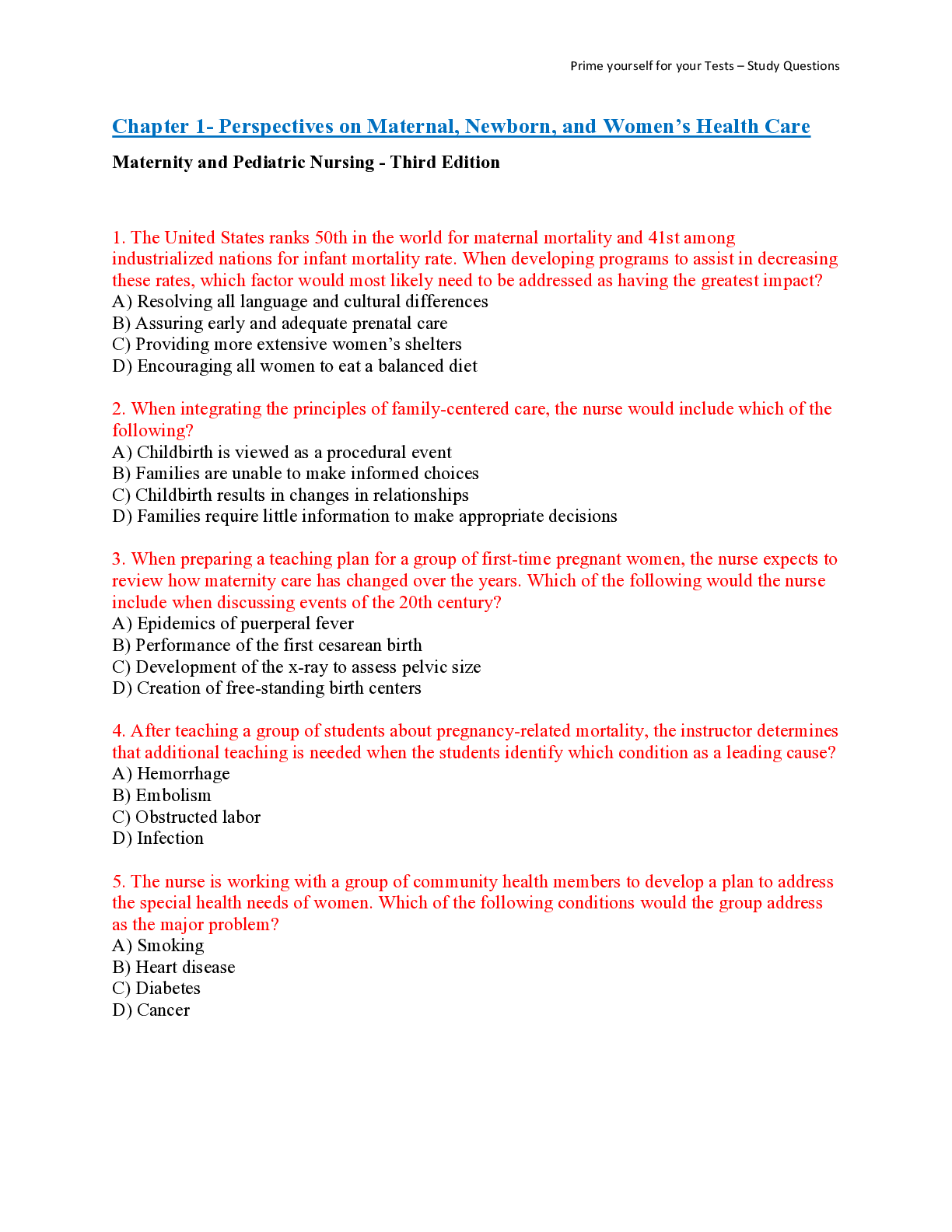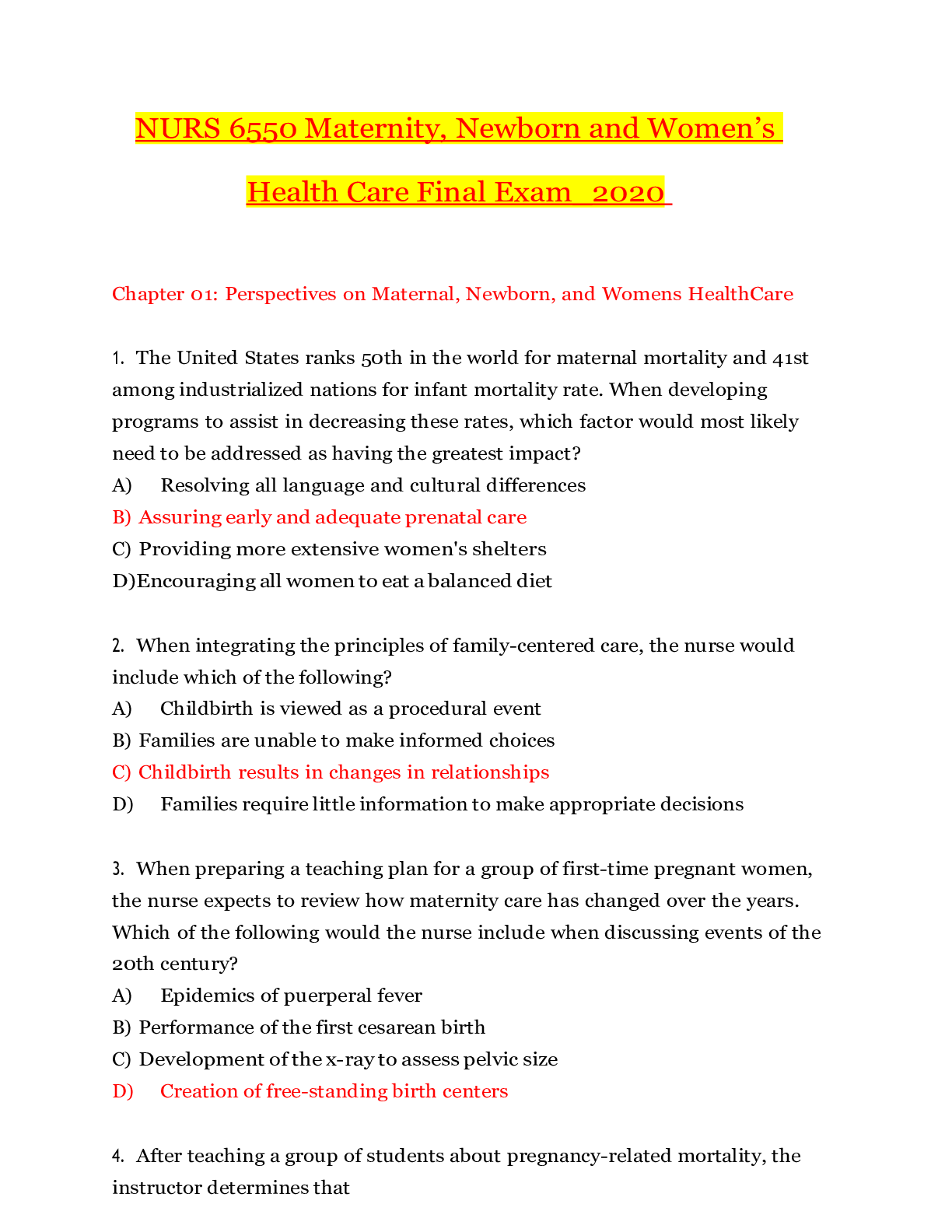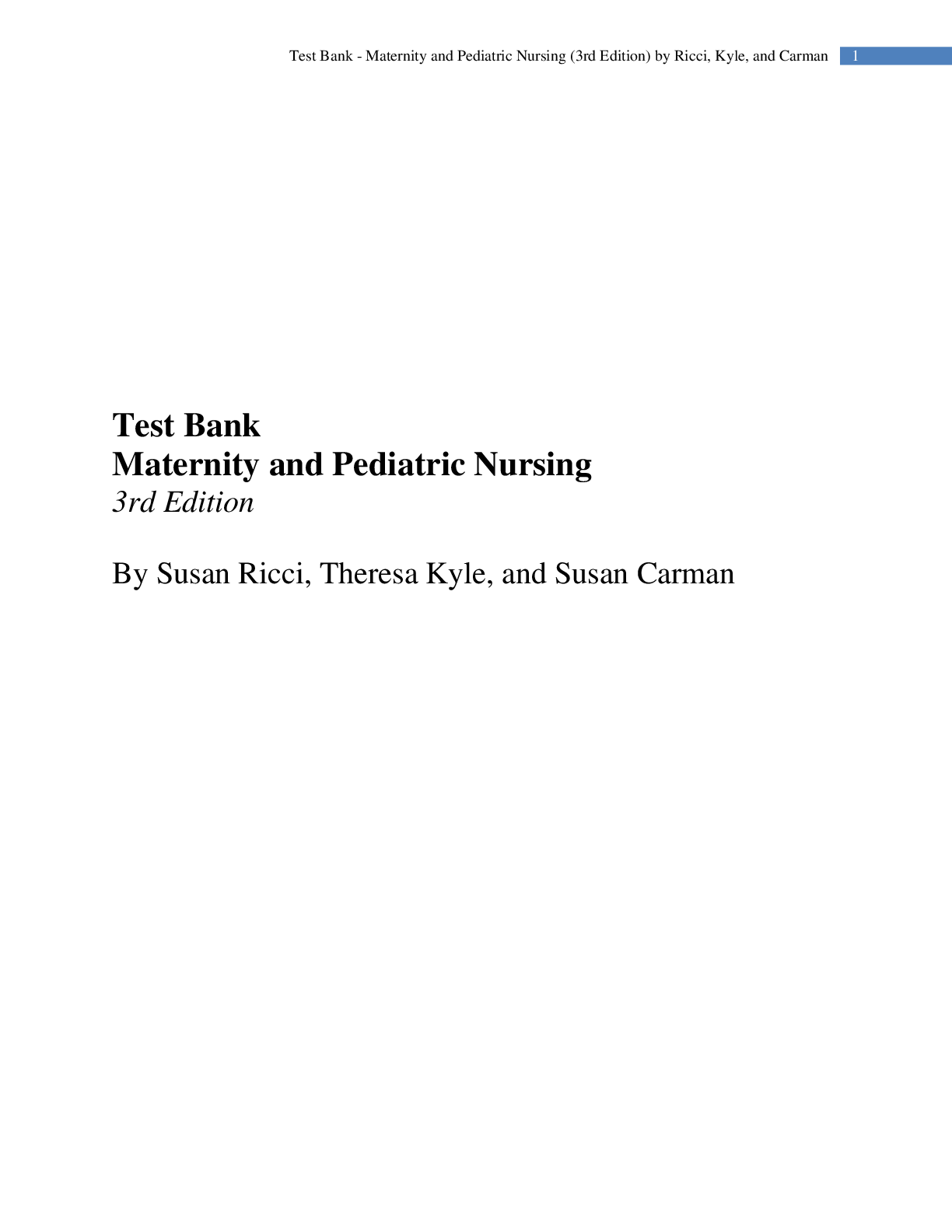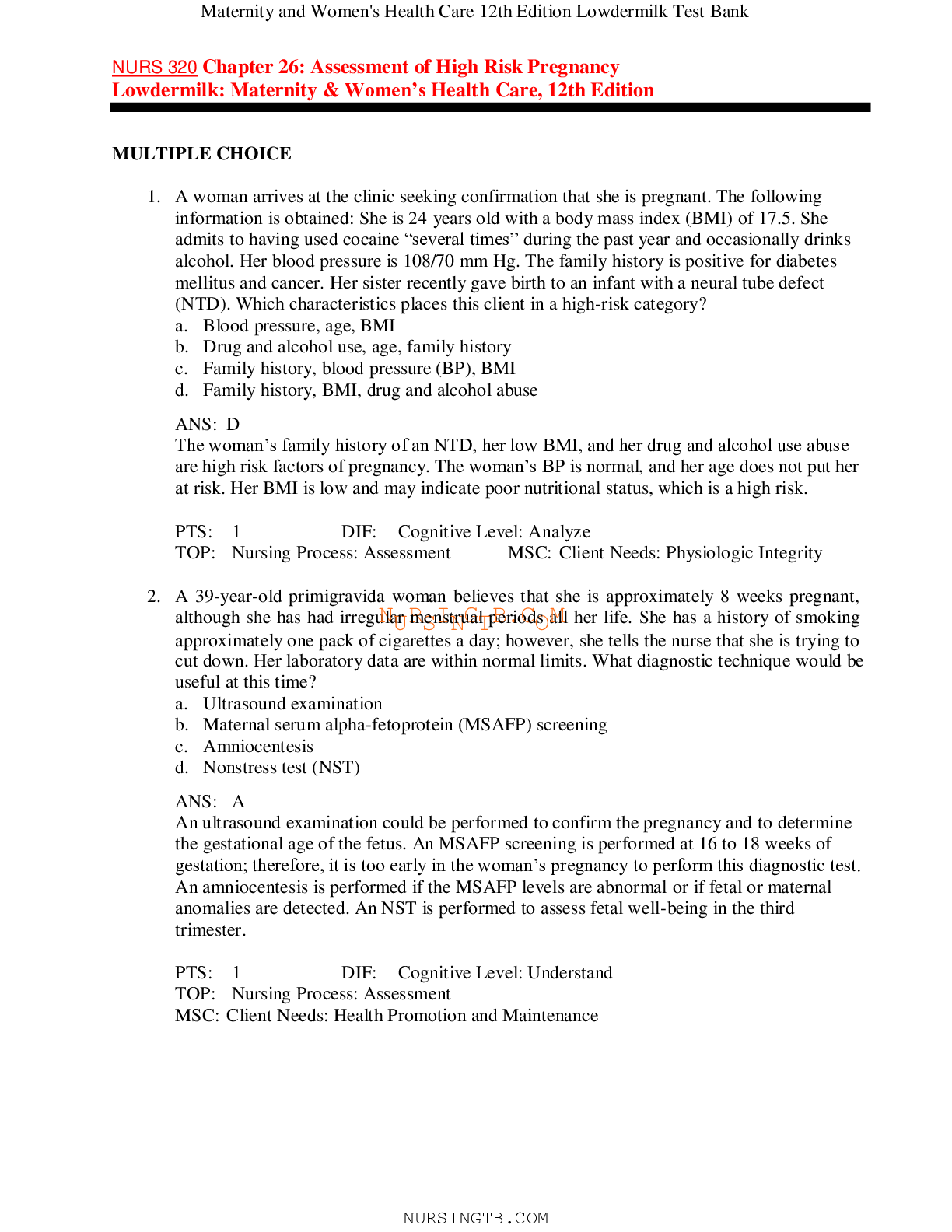*NURSING > EXAM > NUR 300 WI Maternity & Women’s Health Care 12th Edition (2019/2020) - Chapter 22 – Central Michi (All)
NUR 300 WI Maternity & Women’s Health Care 12th Edition (2019/2020) - Chapter 22 – Central Michigan University | Transition to Parenthood
Document Content and Description Below
NUR 300 WI Maternity & Women’s Health Care 12th Edition - Chapter 22 – Central Michigan University Chapter 22: Transition to Parenthood MULTIPLE CHOICE 1. After giving birth to a health... y infant boy, a primiparous client, 16 years of age, is admitted to the postpartum unit. An appropriate nursing diagnosis for her at this time is Deficient knowledge of infant care. What should the nurse be certain to include in the plan of care as he or she prepares the client for discharge? a. Teach the client how to feed and bathe her infant. b. Give the client written information on bathing her infant. c. Advise the client that all mothers instinctively know how to care for their infants. d. Provide time for the client to bathe her infant after she views a demonstration of infant bathing. Having the mother demonstrate infant care is a valuable method of assessing the clients understanding of her newly acquired knowledge, especially in this age group, because she may inadvertently neglect her child. Although verbalizing how to care for the infant is a form of client education or providing written information might be useful, neither is the most developmentally appropriate teaching method for a teenage mother. Advising the young woman that all mothers instinctively know how to care for their infants is inappropriate; it is belittling and false. DIF: Cognitive Level: Apply REF: IMS: 520 TOP: Nursing Process: Planning MSC: Client Needs: Health Promotion and Maintenance 2. A 30-year-old multiparous woman has a boy who is years old and has recently delivered an infant girl. She tells the nurse, I dont know how Ill ever manage both children when I get home. Which suggestion would assist this new mother in alleviating sibling rivalry? a. Tell the older child that he is a big boy now and should love his new sister. b. Let the older child stay with his grandparents for the first 6 weeks to allow him to adjust to the newborn. c. Ask friends and relatives not to bring gifts to the older sibling because you do not want to spoil him. d. Realize that the regression in habits and behaviors in the older child is a typical reaction and that he needs extra love and attention at this time. The older child may regress in habits or behaviors (e.g., toileting, sleep habits) as a method of seeking attention. Parents need to distribute their attention in an equitable manner. Telling the older child that he should love his new sister is a negative approach to facilitating sibling acceptance of the new infant. Reactions of siblings may result from temporary separation from the mother. Removing the older child from the home when the new infant arrives may enhance negative behaviors from the older child caused by a separation from the mother. Providing small gifts from the infant to the older child is a strategy for facilitating sibling acceptance of the new infant. DIF: Cognitive Level: Analyze REF: IMS: 517 TOP: Nursing Process: Planning MSC: Client Needs: Health Promotion and Maintenance 3. The nurse observes that a first-time mother appears to ignore her newborn. Which strategy should the nurse use to facilitate mother-infant attachment? a. Tell the mother she must pay attention to her infant. b. Show the mother how the infant initiates interaction and attends to her. c. Demonstrate for the mother different positions for holding her infant while feeding. d. Arrange for the mother to watch a video on parent-infant interaction. Pointing out the responsiveness of the infant is a positive strategy for facilitating parent-infant attachment. Telling the mother that she must pay attention to her infant may be perceived as derogatory and is not appropriate. Educating the young mother in infant care is important, but pointing out the responsiveness of her baby is a better tool for facilitating mother-infant attachment. Videos are an educational tool that can demonstrate parent-infant attachment, but encouraging the mother to recognize the infants responsiveness is more appropriate. DIF: Cognitive Level: Apply REF: IMS: 502 TOP: Nursing Process: Implementation MSC: Client Needs: Health Promotion and Maintenance 4. A nurse hears a primiparous woman talking to her son and telling him that his chin is just like his dads. This statement is most descriptive of which process? a. Mutuality b. Synchrony c. Claiming d. Reciprocity Claiming refers to the process by which the child is identified in terms of likeness to other family members. Mutuality occurs when the infants behaviors and characteristics call forth a corresponding set of maternal behaviors and characteristics. Synchrony refers to the fit between the infants cues and the parents responses. Reciprocity is a type of body movement or behavior that provides the observer with cues. DIF: Cognitive Level: Understand REF: pp. 502, 504 TOP: Nursing Process: Evaluation MSC: Client Needs: Psychosocial Integrity 5. New parents express concern that because of the mothers emergency cesarean birth under general anesthesia, they did not have the opportunity to hold and bond with their daughter immediately after her birth. Which information should the nurses response convey? a. Attachment, or bonding, is a process that occurs over time and does not require early contact. b. Time immediately after birth is a critical period for humans. c. Early contact is essential for optimal parent-infant relationships. d. These new parents should just be happy that the infant is healthy. Attachment occurs over time and does not require early contact. Although a delay in contact does not necessarily mean that attachment is inhibited, additional psychologic energy may be necessary to achieve the same effect. The formerly accepted definition of bonding held that the period immediately after birth was critical for bonding to occur. Research since has indicated that parent-infant attachment occurs over time. A delay does not inhibit the process. Parent- infant attachment involves activities such as touching, holding, and gazing; it is not exclusively eye contact. Telling the parents that they should be happy that the infant is healthy is inappropriate; it may be received as derogatory and belittling. DIF: Cognitive Level: Apply REF: IMS: 505 TOP: Nursing Process: Implementation MSC: Client Needs: Health Promotion and Maintenance 6. During a telephone follow-up conversation with a woman who is 4 days postpartum, the woman tells the nurse, I dont know whats wrong. I love my son, but I feel so let down. I seem to cry for no reason! Which condition might this new mother be experiencing? a. Letting-go b. Postpartum depression (PPD) c. Postpartum blues d. Attachment difficulty During the postpartum blues, women are emotionally labile, often crying easily and for no apparent reason. This lability seems to peak around the fifth postpartum day. The letting-go phase is the period that occurs several weeks after childbirth. During this phase the woman wants to move forward as a family unit with all members, appropriately interacting to their new roles. PPD is an intense, pervasive sadness marked by severe, labile mood swings; it is more serious and persistent than the postpartum blues. Crying is not a maladaptive attachment response; it indicates postpartum blues. DIF: Cognitive Level: Understand REF: IMS: 509 TOP: Nursing Process: Assessment | Nursing Process: Diagnosis MSC: Client Needs: Psychosocial Integrity 7. Which statement by the nurse can assist a new father in his transition to parenthood? a. Pointing out that the infant turned at the sound of his voice b. Encouraging him to go home to get some sleep c. Telling him to tape the infants diaper a different way d. Suggesting that he let the infant sleep in the bassinet Infants respond to the sound of voices. Because attachment involves a reciprocal interchange, observing the interaction between parent and infant is very important. Separation of the parent and infant does not encourage parent-infant attachment. Educating the parent in infant care techniques is important, but the manner in which a diaper is taped is not relevant and does not enhance parent-infant interactions. Parent-infant attachment involves touching, holding, and cuddling. It is appropriate for a father to want to hold the infant as the baby sleeps. DIF: Cognitive Level: Apply REF: IMS: 506 TOP: Nursing Process: Implementation MSC: Client Needs: Health Promotion and Maintenance - - - - - - - - - - - - - - - - - - - - - - - - - - 19. The early postpartum period is a time of emotional and physical vulnerability. Many mothers can easily become psychologically overwhelmed by the reality of their new parental responsibilities. Fatigue compounds these issues. Although the baby blues are a common occurrence in the postpartum period, approximately 500,000 women in America experience a more severe syndrome known as PPD. Which statement regarding PPD is essential for the nurse to be aware of when attempting to formulate a nursing diagnosis? a. PPD symptoms are consistently severe. b. This syndrome affects only new mothers. c. PPD can easily go undetected. d. Only mental health professionals should teach new parents about this condition. PPD can go undetected because parents do not voluntarily admit to this type of emotional distress out of embarrassment, fear, or guilt. PPD symptoms range from mild to severe, with women having both good and bad days. PPD may also affect new fathers. Therefore, both mothers and fathers should be screened. The nurse should include information on PPD and how to differentiate it from the baby blues for all clients before discharge. Nurses can also urge new parents to report symptoms and to seek follow-up care promptly if symptoms occur. DIF: Cognitive Level: Analyze REF: IMS: 510 TOP: Nursing Process: Diagnosis MSC: Client Needs: Psychosocial Integrity 20. The postpartum woman continually repeats the story of her labor, delivery, and recovery experience. What is this new mother attempting to achieve with this behavior? a. Providing others with her knowledge of events b. Making the birth experience real c. Taking hold of the events leading up to her labor and delivery d. Accepting her response to labor and delivery Reliving the birth experience makes the event real and helps the mother realize that the pregnancy is over and that the infant is born and is now a separate individual. The retelling of the story satisfies her needs, not the needs of others. This new mother is in the taking-in phase, trying to make the birth experience seem real and separate the infant from herself. DIF: Cognitive Level: Understand REF: IMS: 508 TOP: Nursing Process: Assessment MSC: Client Needs: Psychosocial Integrity 21. A nurse is observing a family. The mother is holding the baby she delivered less than 24 hours ago. Her husband is watching his wife and asking questions about newborn care. The 4- year-old brother is punching his mother on the back. How should the nurse react to this situation? a. Report the incident to the social services department. b. Advise the parents that the toddler needs to be reprimanded. c. Report to oncoming staff that the mother is probably not a good disciplinarian. d. Realize that this is a normal family unit adjusting to a major family change. The observed behaviors are normal variations of a family adjusting to change. Reporting this one incident is not needed. Offering advice at this point would make the parents feel inadequate. DIF: Cognitive Level: Analyze REF: pp. 517-518 TOP: Nursing Process: Assessment MSC: Client Needs: Psychosocial Integrity 22. During which phase of maternal adjustment will the mother relinquish the baby of her fantasies and accept the real baby? a. Letting go b. Taking hold c. Taking in d. Taking on Accepting the real infant and relinquishing the fantasy infant occurs during the letting-go phase of maternal adjustment. During the taking-hold phase, the mother assumes responsibility for her own care and shifts her attention to the infant. In the taking-in phase, the mother is primarily focused on her own needs. A taking-on phase of maternal adjustment does not exist. DIF: Cognitive Level: Understand REF: IMS: 508 TOP: Nursing Process: Assessment MSC: Client Needs: Psychosocial Integrity 23. A 25-year-old gravida 1 para 1 who had an emergency cesarean birth 3 days ago is scheduled for discharge. As the nurse prepares her for discharge, she begins to cry. The nurses next action should be what? a. Assess her for pain. b. Point out how lucky she is to have a healthy baby. c. Explain that she is experiencing postpartum blues. d. Allow her time to express her feelings. Although many women experience transient postpartum blues, they need assistance in expressing their feelings. Postpartum blues affects 50% to 80% of new mothers. An assumption that the client is in pain should not be made when, in fact, she may have no pain whatsoever. Making this assumption would be blocking communication and inappropriate in this situation. The client needs the opportunity to express her feelings first; client teaching can occur later. DIF: Cognitive Level: Apply REF: IMS: 509 TOP: Nursing Process: Implementation MSC: Client Needs: Psychosocial Integrity 24. A new father states, I know nothing about babies; however, he seems to be interested in learning. How would the nurse best respond to this father? a. Continue to observe his interaction with the newborn. b. Tell him when he does something wrong. c. Show no concern; he will learn on his own. d. Include him in teaching sessions. The nurse must be sensitive to the fathers needs and include him whenever possible. As fathers take on their new role, the nurse should praise every attempt, even if his early care is awkward. Although noting the bonding process of the mother and the father is important, it does not satisfy the expressed needs of the father. The new father should be encouraged to care for his baby by pointing out the things that he does right. Criticizing him will discourage him. DIF: Cognitive Level: Apply REF: IMS: 511 TOP: Nursing Process: Planning MSC: Client Needs: Health Promotion and Maintenance [Show More]
Last updated: 1 year ago
Preview 1 out of 30 pages
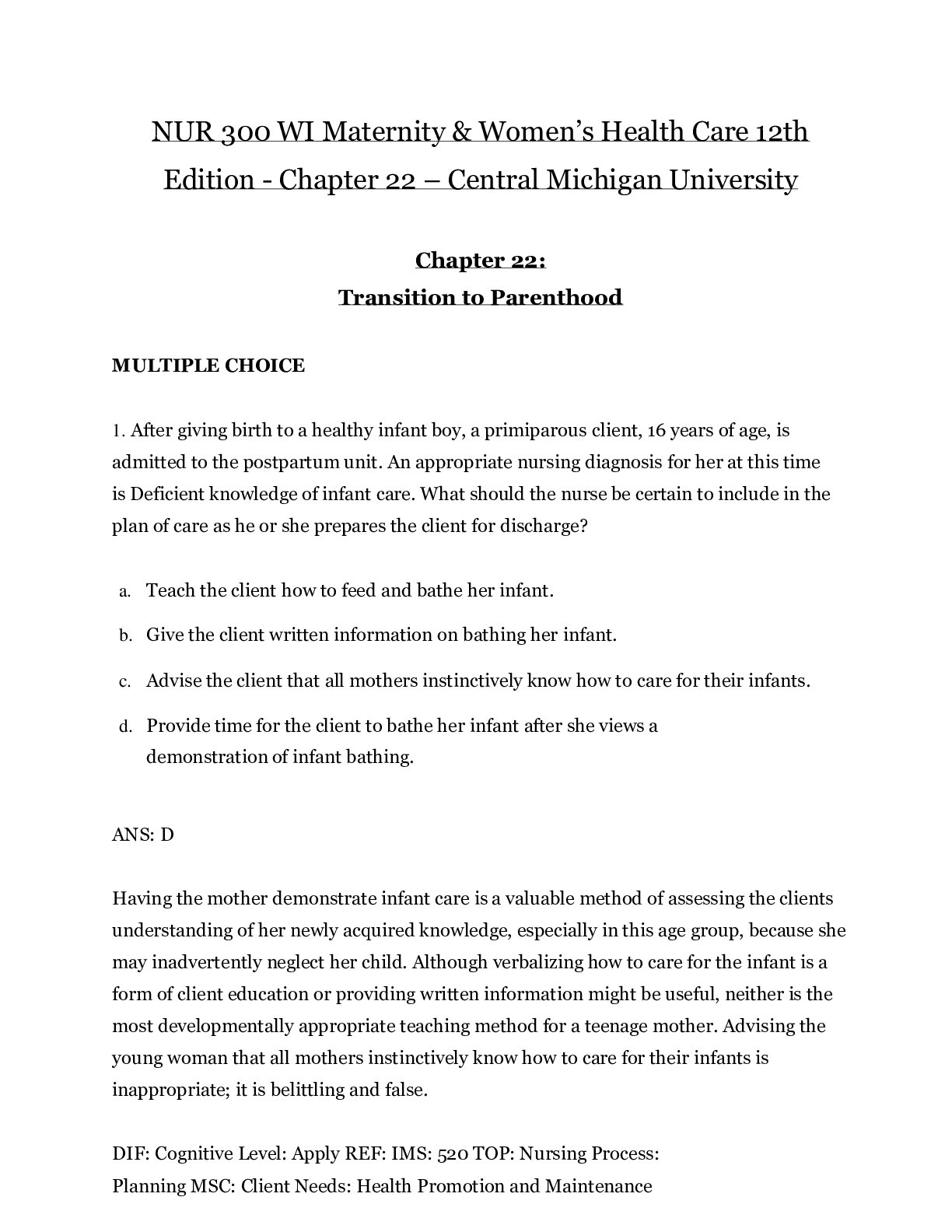
Reviews( 0 )
Document information
Connected school, study & course
About the document
Uploaded On
Jun 29, 2020
Number of pages
30
Written in
Additional information
This document has been written for:
Uploaded
Jun 29, 2020
Downloads
0
Views
40


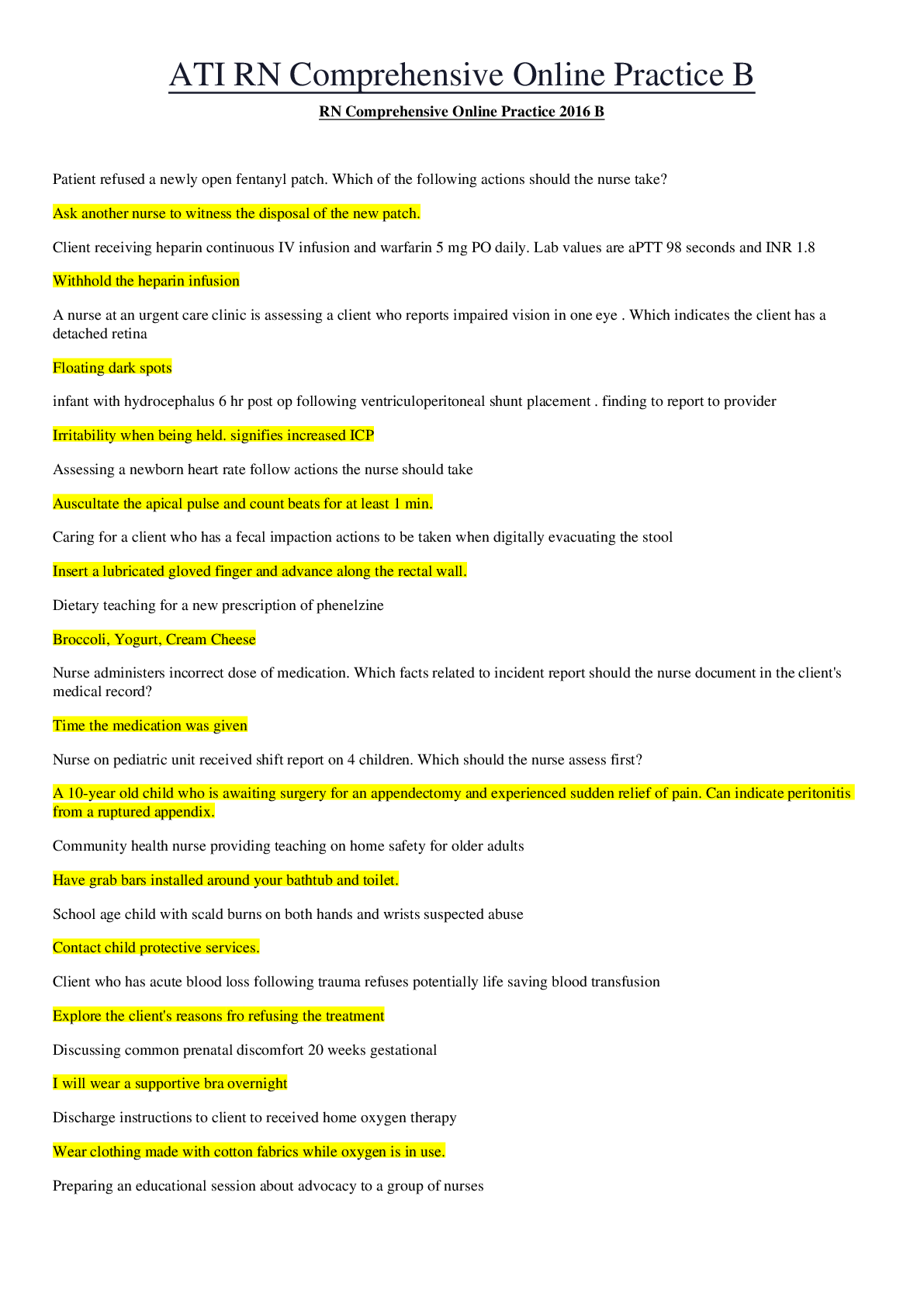
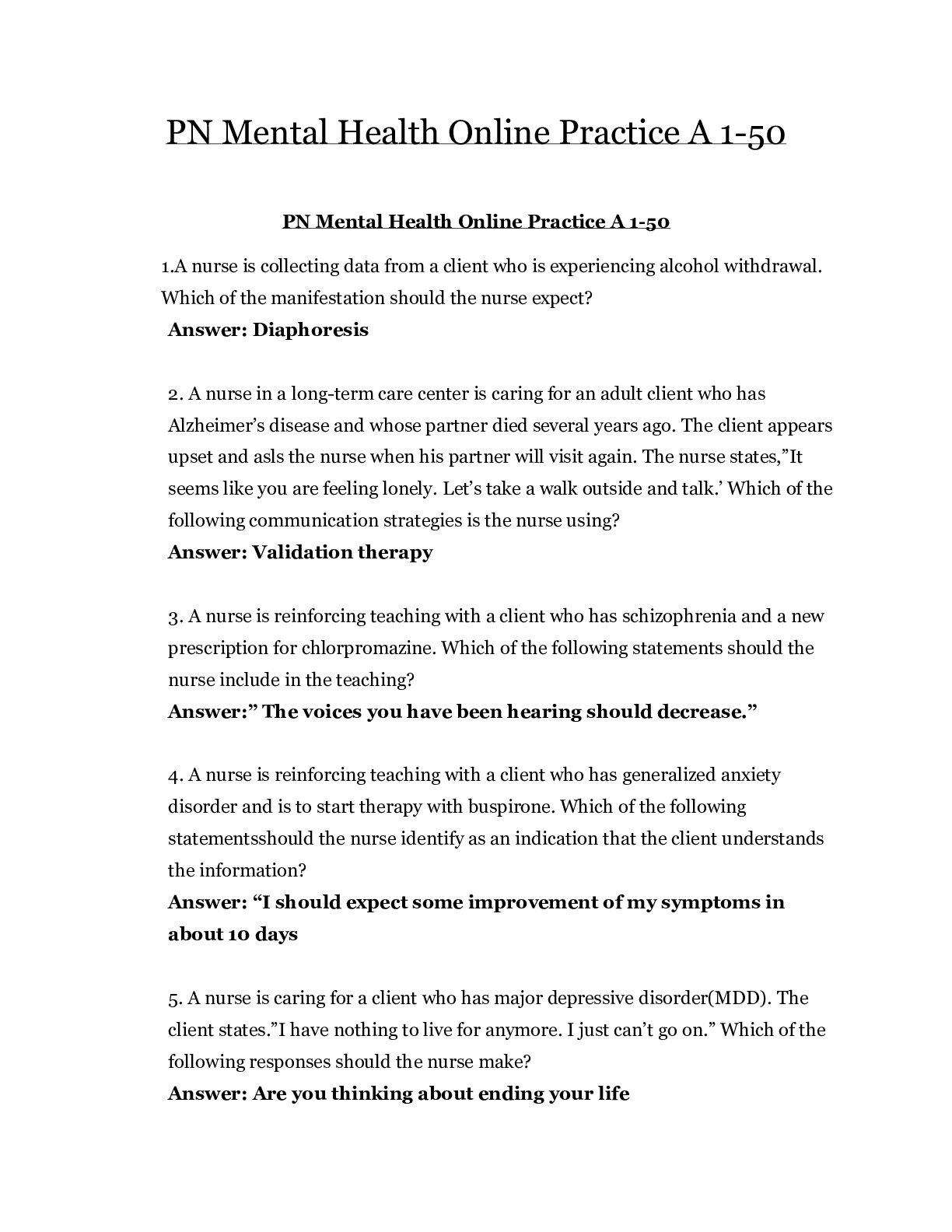
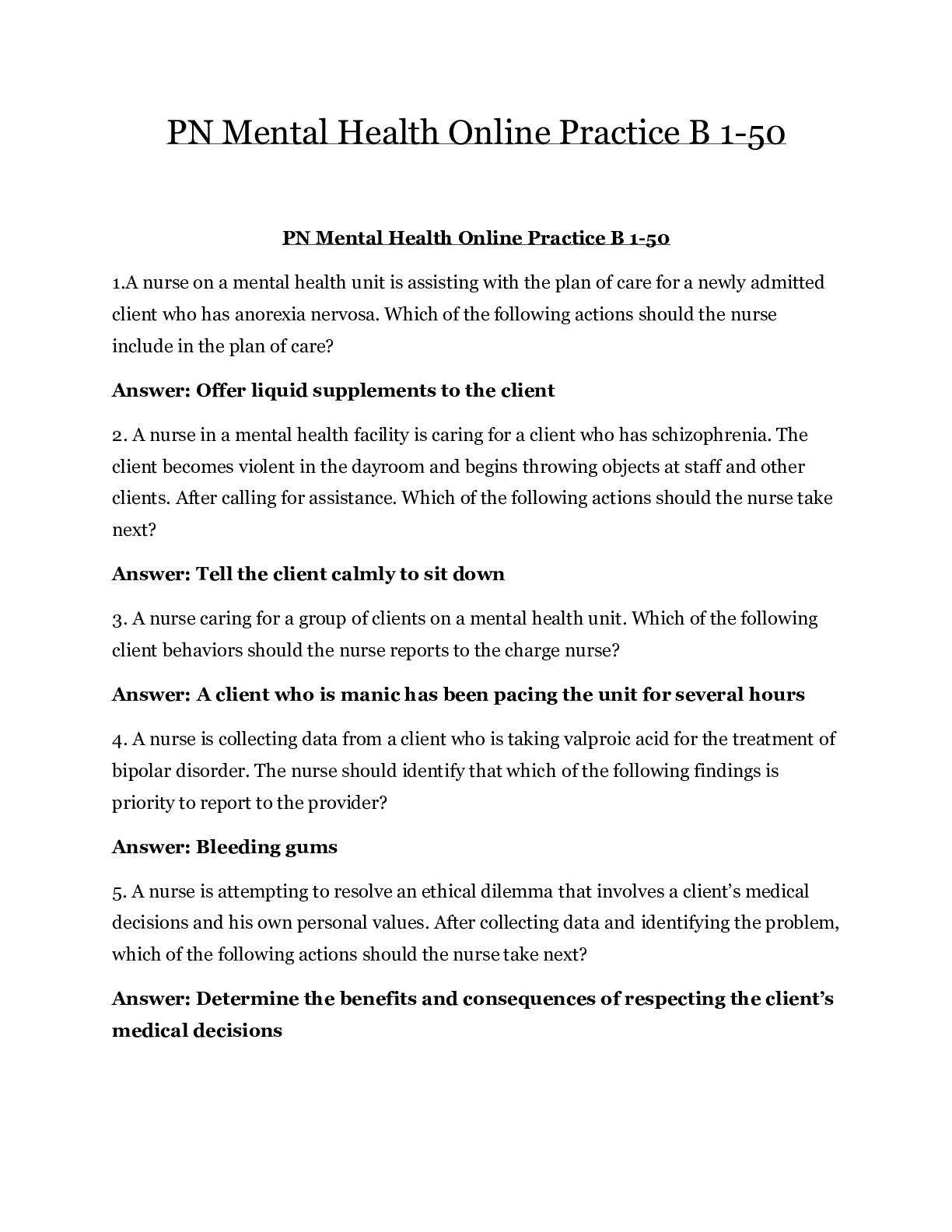
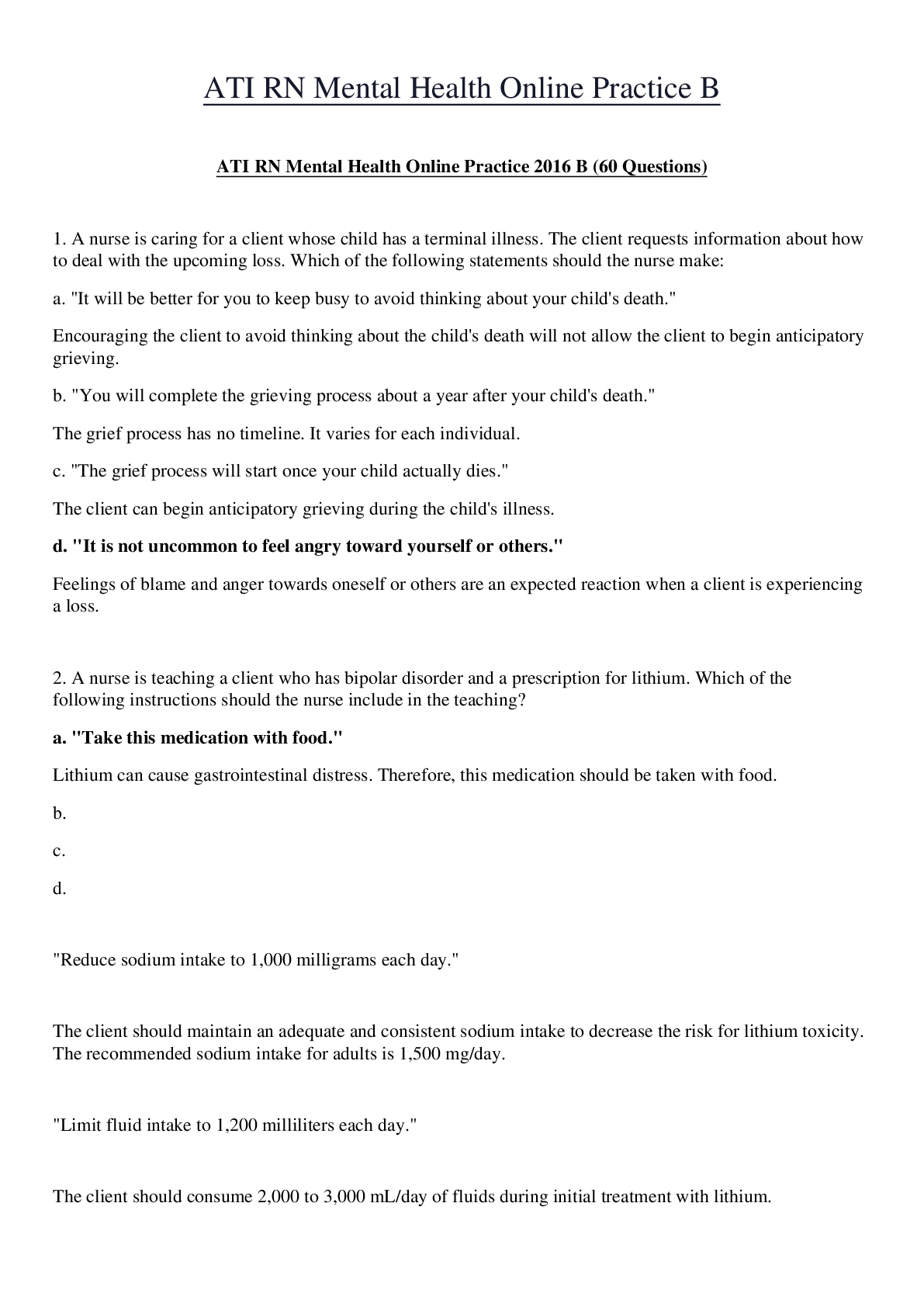

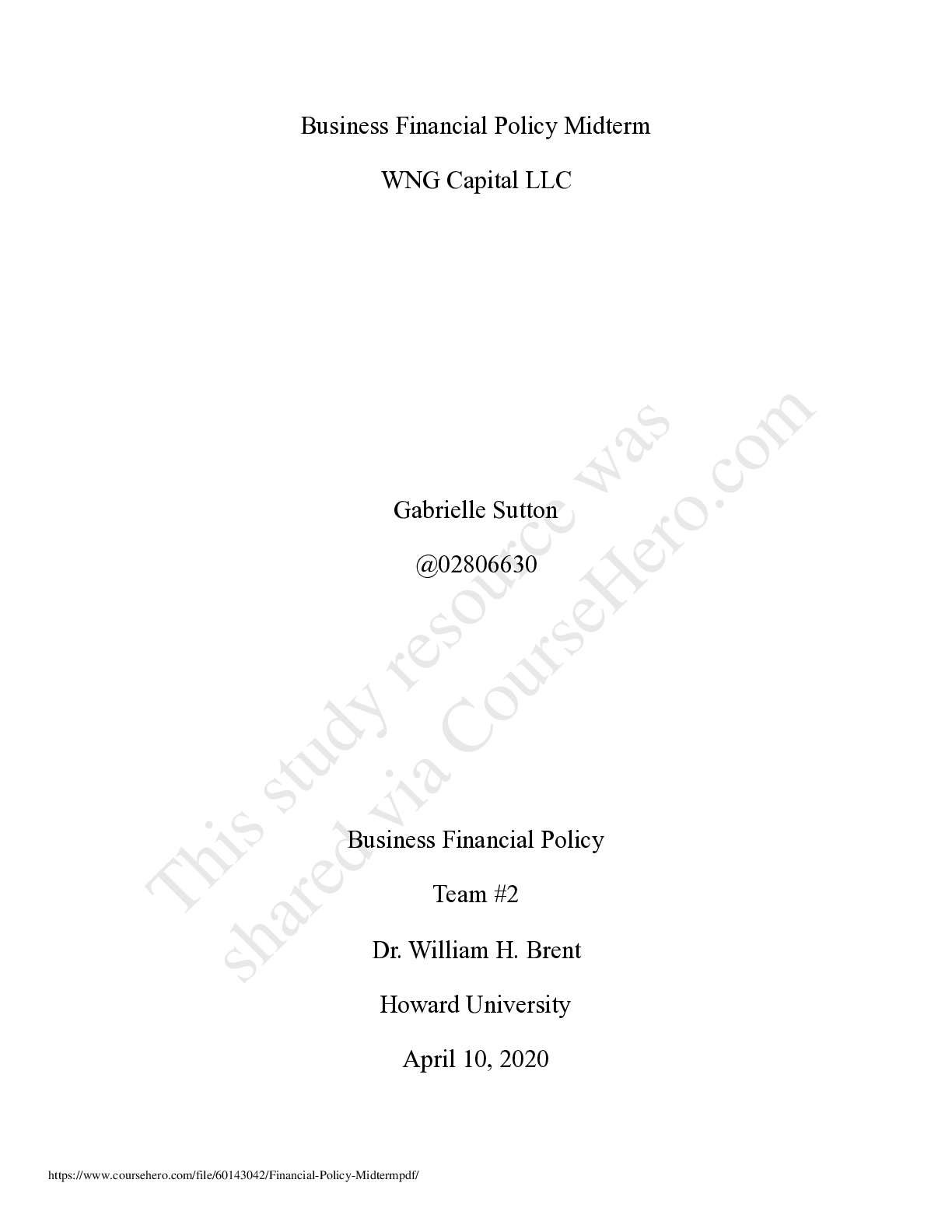
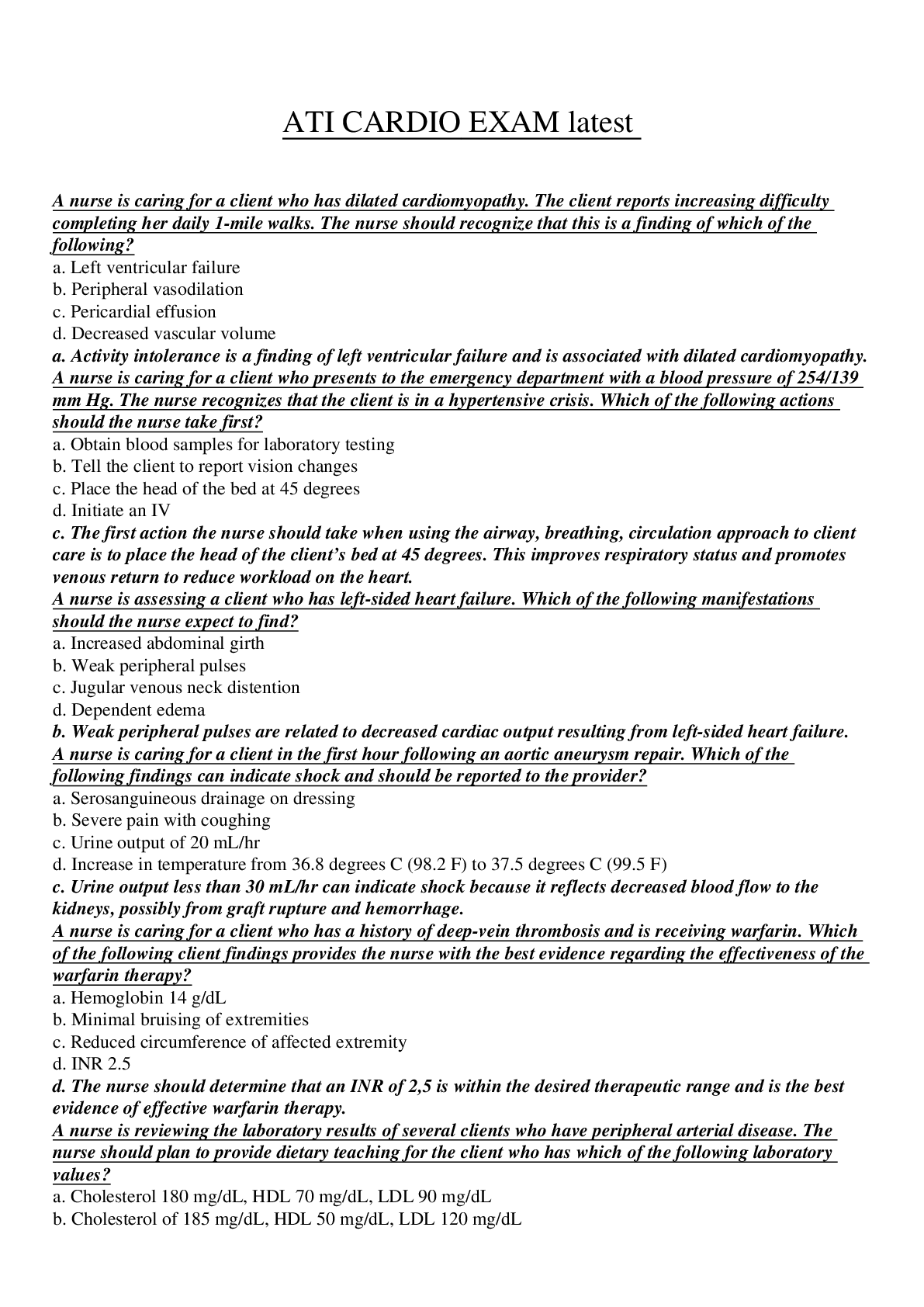
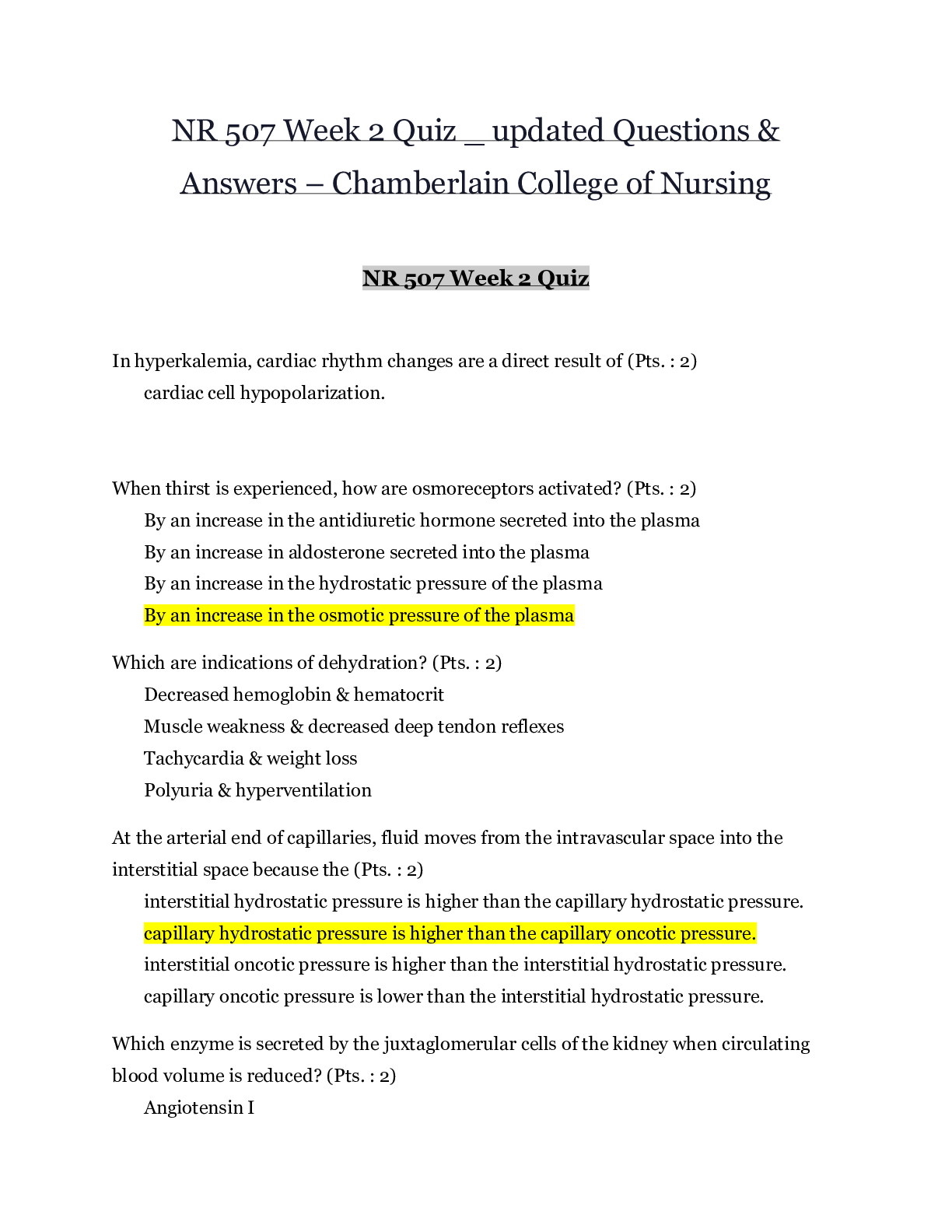
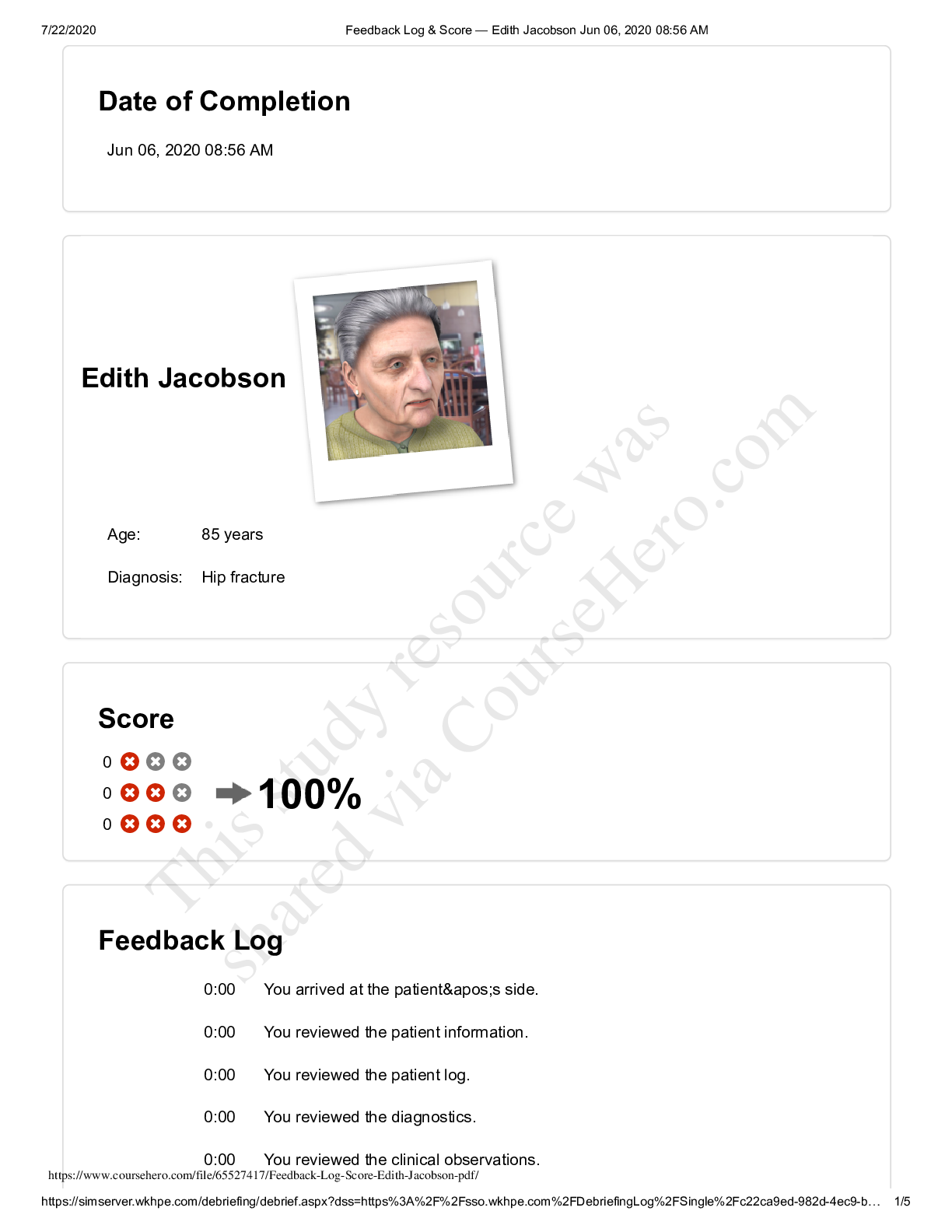
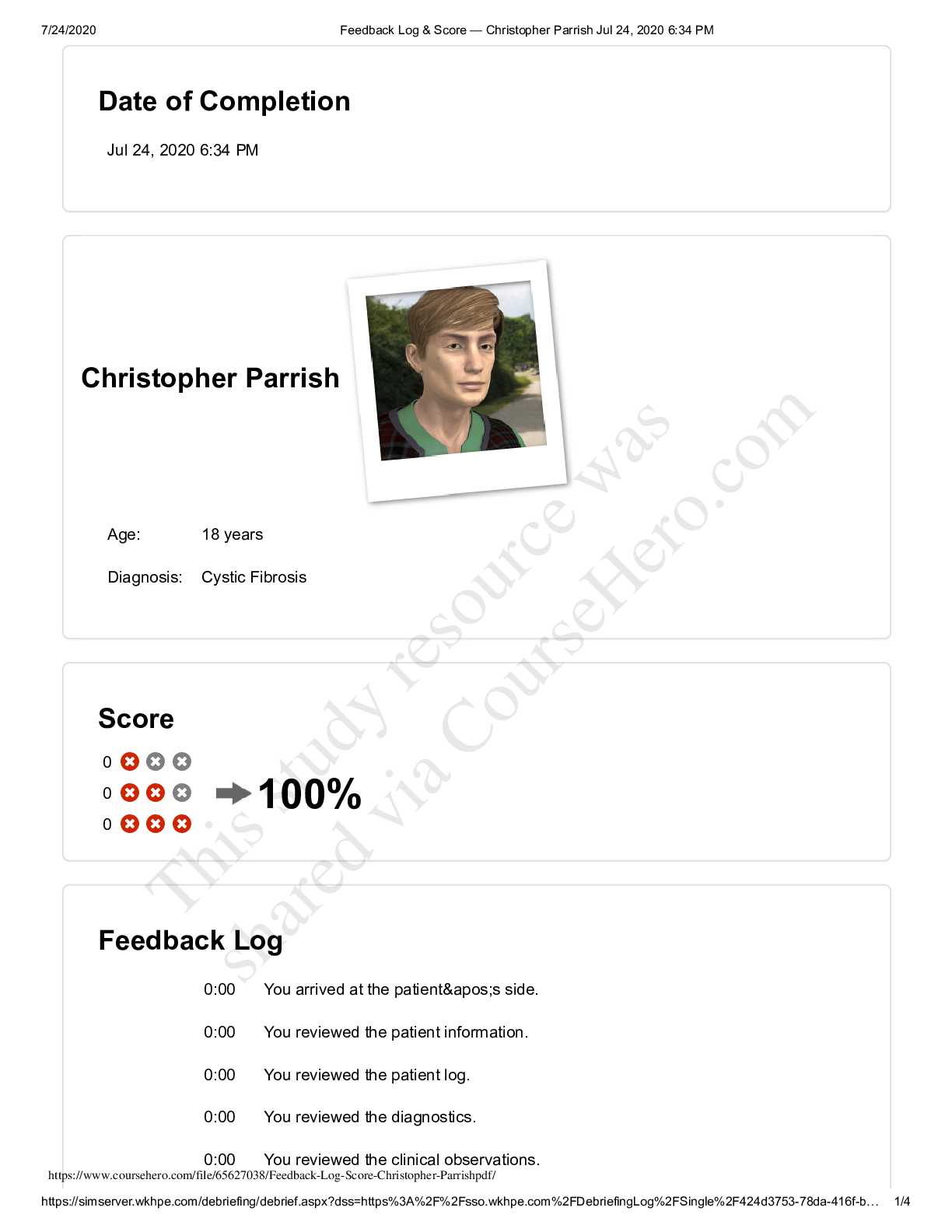
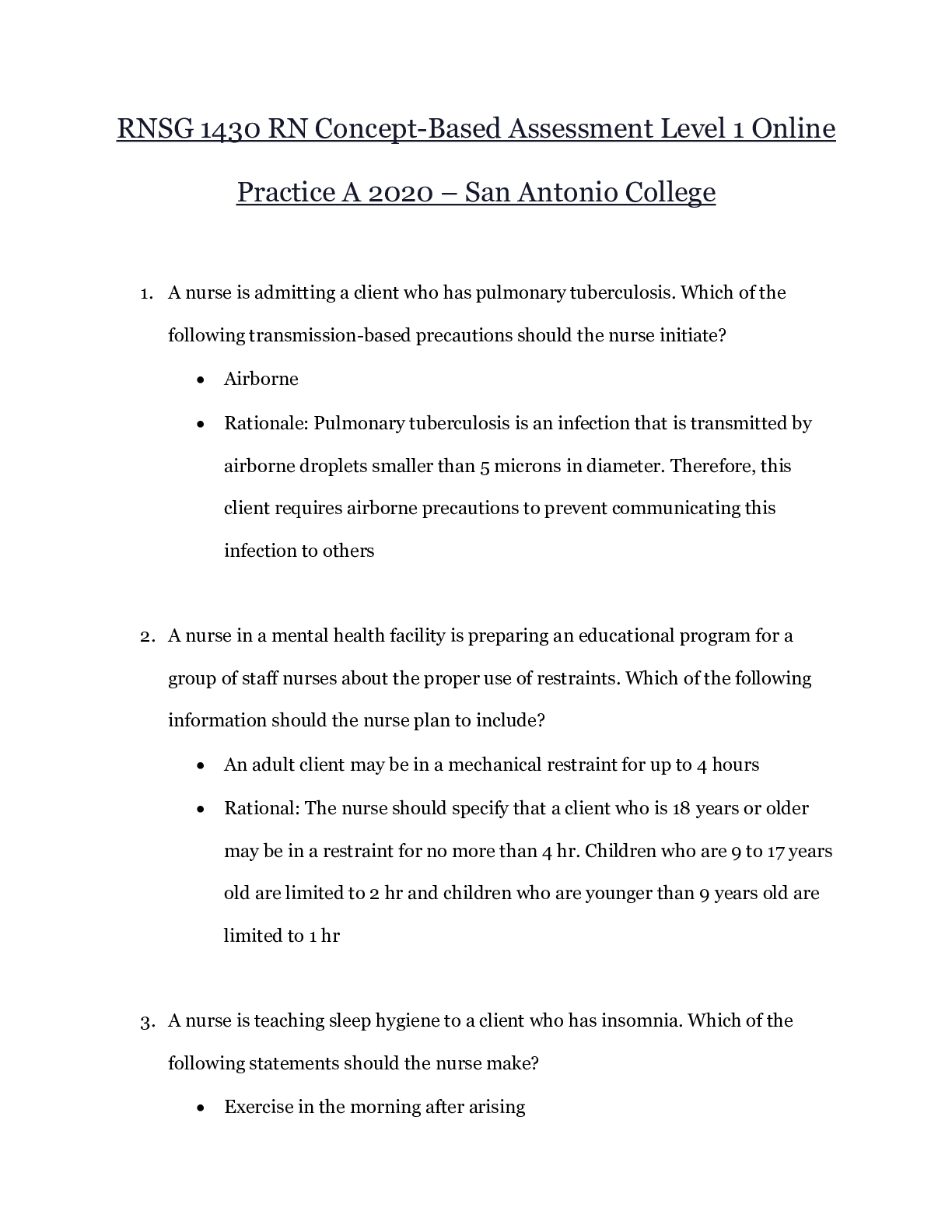


 – CHAMBERLAIN COLLEGE OF NURSING.png)
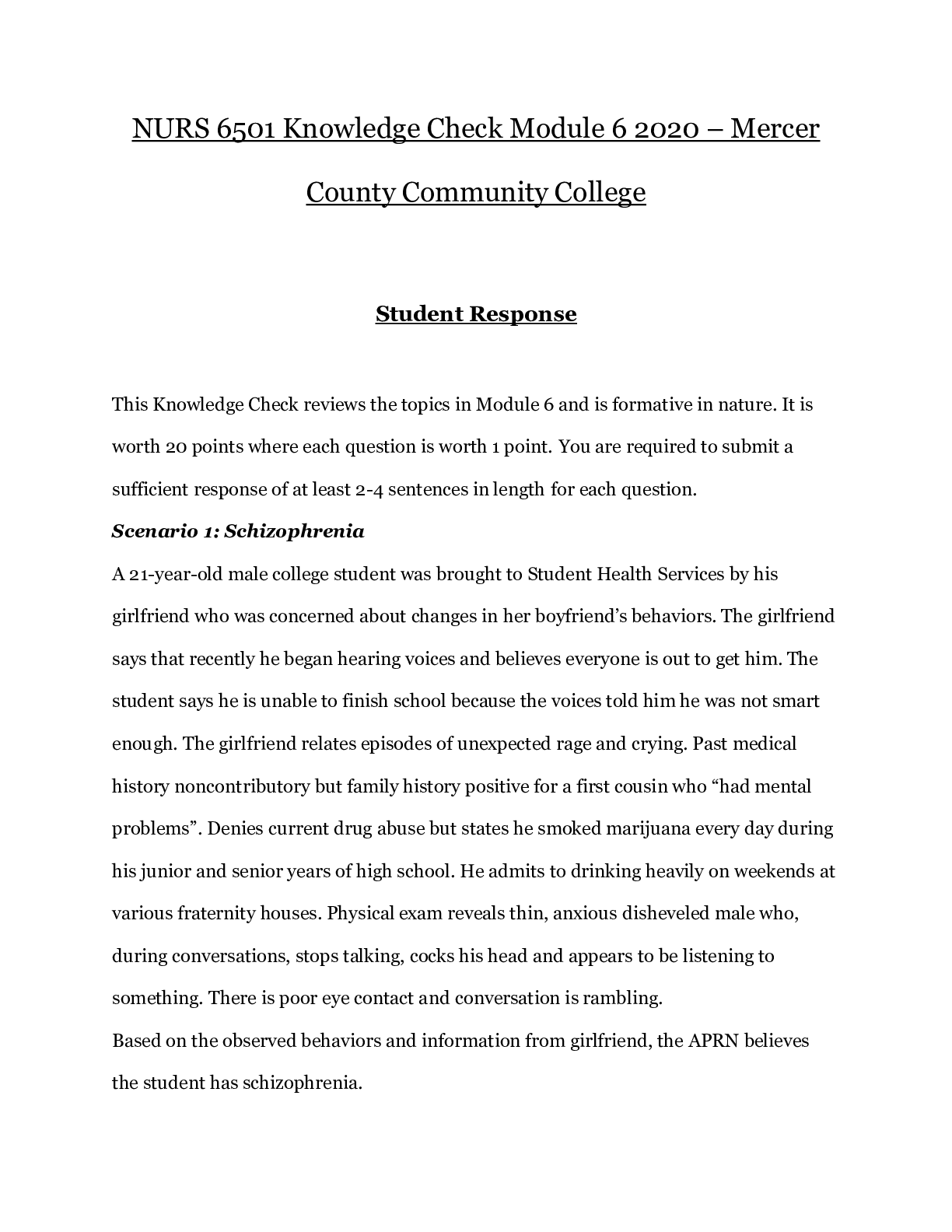
Test Bank Latest 2023.png)




